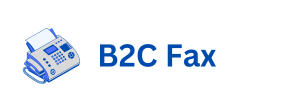1. Why Segmenting Your Database Matters
Segmentation involves categorizing your audience based on shared characteristics or behaviors. Instead of sending generic messages, chinese malaysia phone number lead segmentation enables tailored communication, which is more likely to resonate with individual preferences.
1.1 Benefits of Segmentation
- Enhanced Personalization: Speak directly to the unique needs and interests of each group.
- Higher Engagement Rates: Relevant content attracts more attention and interaction.
- Efficient Use of Resources: Targeted efforts reduce wasted marketing spend.
- Improved : Focused campaigns yield better returns by addressing the right audience.
1.2 Types of Segmentation
- Demographic: Age, gender, income, location.
- Behavioral: Purchase history, browsing habits, engagement levels.
- Psychographic: Values, interests, lifestyle choices.
- Technographic: Device usage, preferred communication channels.
2. Collecting and Organizing Data
The quality of your database directly impacts the success of your segmentation efforts. Having accurate and comprehensive data is essential.
2.1 Sources of Data
- Website Analytics: Track user interactions and behaviors.
- Email Engagement: Monitor open rates, clicks, and responses.
- Purchase History: Identify buying patterns and preferences.
- Surveys and Feedback: Gain insights directly from your audience.
- Social Media Insights: Understand interests and trends through interactions.
2.2 Organizing Your Database
To make segmentation easier:
- Use CRM tools to centralize and categorize data.
- Regularly clean your database to remove duplicates or outdated information.
- Maintain clear labels and tags for each segment for better marketing results easy retrieval.
3. Steps to Segment Your Special Database
Once you have a well-organized database, follow these steps to create meaningful segments.
3.1 Define Your Objectives
Understand the goals of your marketing campaign before segmenting. For example:
- Are you promoting a new product?
- Are you trying to re-engage inactive customers?
- Are you targeting a specific region or demographic?
3.2 Choose Segmentation Criteria
Based on your objectives, our new product launch process (new details) decide on the parameters for segmentation. For better marketing results instance:
- For a holiday promotion, use location and age as criteria.
- To target loyal customers, focus on purchase history and engagement levels.
3.3 Test and Validate Your Segments
Create small sample groups from your segments and test your messaging. Use the results to refine your segments further.
3.4 Use Marketing Automation
Leverage marketing automation tools to manage and execute campaigns for better marketing results each segment. Automation ensures timely delivery and consistent follow-ups.
4. Applying Segmentation for Marketing Success
Segmentation is only valuable if it is effectively applied in campaigns. Here’s how you can use segmented data for better marketing results.
4.1 Personalized Email Campaigns
Segmented lists allow you to send emails that are highly relevant to the recipient. For example:
- New Customers: Share welcome messages and first-time purchase discounts.
- Frequent Buyers: Offer loyalty rewards or exclusive previews.
- Inactive Users: Re-engagement campaigns with special offers.
4.2 Tailored Social Media Ads
Use segmentation data to create custom audiences for better marketing results social media advertising. Ensure that ads are relevant to each segment’s preferences and needs.
4.3 Targeted Promotions
Create exclusive offers or promotions for specific segments, aol email list such as regional discounts or product bundles for high-value customers.
4.4 Improved Customer Support
Segmentation can also be used to enhance customer service. For instance:
- Address common concerns by segmenting users who have experienced similar issues.
- Provide tailored assistance based on purchase or interaction history.

